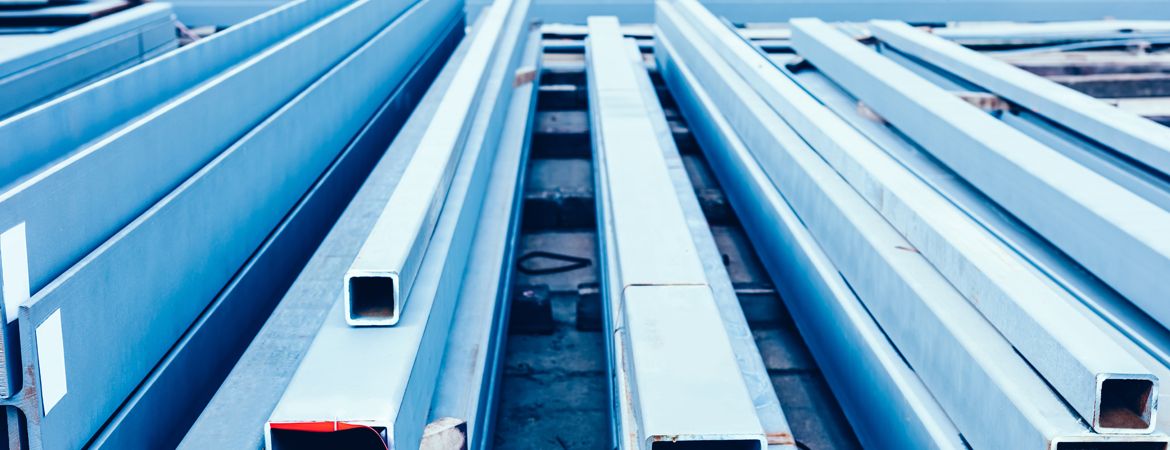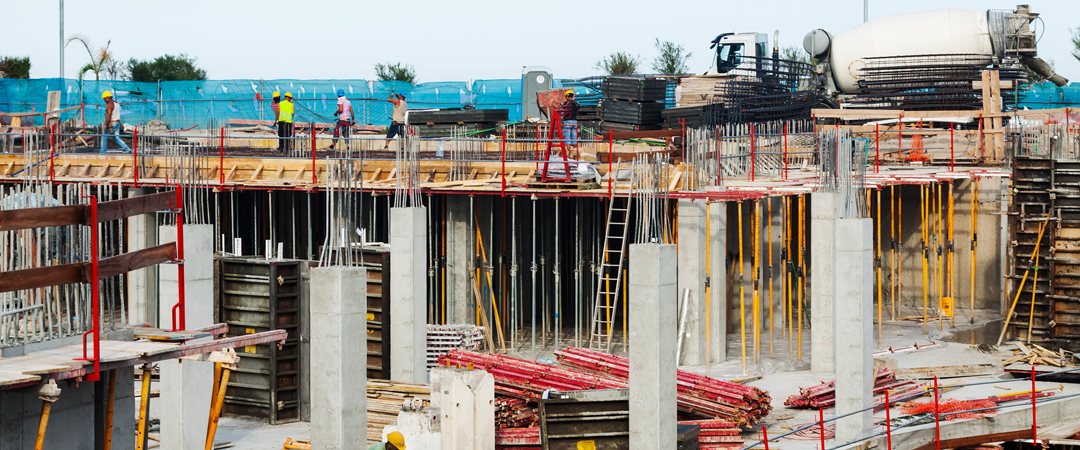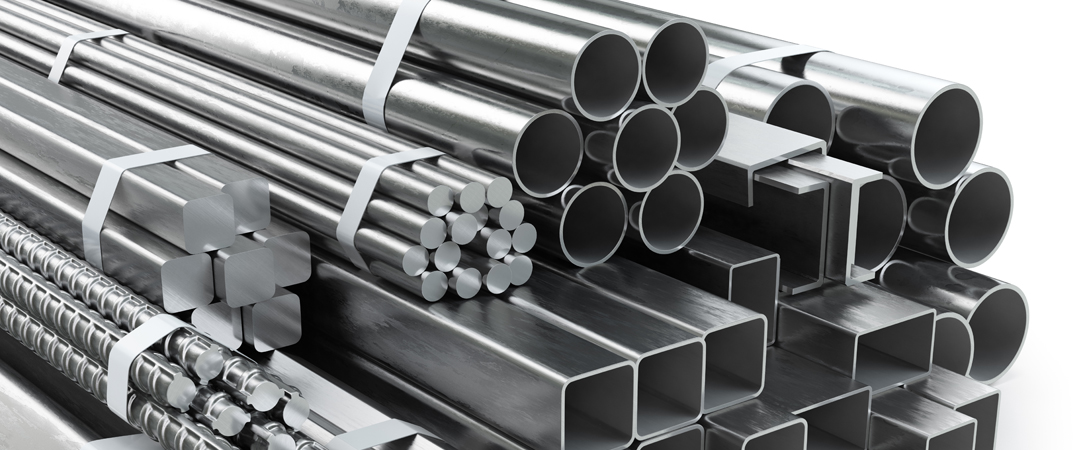
In the world of construction, choosing the right materials is paramount to success. When it comes to reinforced concrete structures, steel emerges as the ideal choice for its unmatched strength and durability. Not only does steel provide excellent tensile strength, but it also enhances the structural integrity of concrete, making it capable of withstanding heavy loads and extreme conditions.
With its high tensile strength, steel reinforces concrete by adding rigidity, ensuring that the structure maintains its shape and stability over time. This combination of steel and concrete creates a building material that is capable of supporting large spans and withstanding seismic forces, making it a preferred choice for tall buildings, bridges, and other structures where strength and safety are critical.
Steel’s resistance to corrosion and fire further adds to its appeal, providing long-lasting protection to buildings. Additionally, steel’s versatility and ability to be customized make it a practical choice for architects and engineers, allowing them to create innovative and complex designs.
When it comes to building with strength, steel is undeniably the go-to material for reinforced concrete structures. Its unmatched durability, strength, and versatility make it an excellent choice for projects of any size or complexity.
Types of steel reinforcement for concrete
Steel reinforcement offers numerous advantages when used in concrete construction. One of the key benefits is its high tensile strength, which is significantly higher than that of concrete alone. This means that steel reinforcement can effectively resist the tension forces that occur in structures, preventing cracks and ensuring the overall stability of the construction.
Another advantage of steel reinforcement in concrete is its ability to enhance the structural integrity of the material. By adding steel bars or mesh to the concrete, the resulting composite material becomes stronger, stiffer, and more resistant to deformations. This makes it ideal for structures that need to withstand heavy loads, such as bridges and high-rise buildings.
Furthermore, steel reinforcement provides durability to concrete. While concrete is excellent in compression, it is weak in tension. By incorporating steel reinforcement, the concrete gains tensile strength, making it more resistant to cracking and increasing its overall lifespan. This durability is especially important in structures exposed to harsh weather conditions or corrosive environments.
Overall, the use of steel reinforcement in concrete offers significant advantages, including increased strength, improved structural integrity, and enhanced durability. These benefits make steel an ideal choice for a wide range of construction projects.
The role of steel reinforcement in enhancing structural integrity
There are several types of steel reinforcement commonly used in concrete construction. The most common type is reinforced steel bars, also known as rebar. These bars are typically made of carbon steel and come in various sizes and shapes, such as round, square, or deformed. The choice of rebar depends on the specific requirements of the project, including the load-bearing capacity and the level of corrosion resistance needed.
Another type of steel reinforcement is welded wire mesh. This consists of a series of steel wires welded together to form a grid pattern. Welded wire mesh is often used in smaller-scale projects or in areas where it is difficult to install individual rebars. It provides a cost-effective and efficient solution for reinforcing concrete.
Additionally, steel fibers are sometimes used as reinforcement in concrete. These small, discrete fibers are typically made of stainless steel or other high-strength materials. Steel fibers improve the flexural and tensile strength of concrete, making it more resistant to cracking and enhancing its overall performance. They are commonly used in industrial flooring, tunnel linings, and shotcrete applications.
Each type of steel reinforcement has its advantages and considerations, and the choice depends on factors such as the project requirements, budget, and desired level of performance.

Common applications of steel reinforcement in concrete construction
Steel reinforcement plays a crucial role in enhancing the structural integrity of reinforced concrete. By adding steel bars or mesh to the concrete, the resulting composite material becomes stronger and more resistant to deformations.
One of the key functions of steel reinforcement is to resist tensile forces. While concrete is excellent in compression, it is weak in tension. By incorporating steel bars or mesh, the tensile forces are transferred to the steel, preventing cracks and ensuring the overall stability of the structure. This is particularly important in structures subjected to heavy loads or dynamic forces, such as bridges and high-rise buildings.
Moreover, steel reinforcement helps to distribute the loads more evenly across the structure. The steel bars or mesh act as a framework, providing additional rigidity and strength to the concrete. This redistribution of forces reduces the risk of localized failure and ensures that the structure can safely support the imposed loads.
Additionally, steel reinforcement improves the ductility of the concrete. Ductility refers to the material’s ability to deform without breaking. By reinforcing concrete with steel, the resulting composite material becomes more ductile, allowing it to absorb energy and withstand sudden and severe loads, such as earthquakes or impact forces.
Overall, steel reinforcement plays a critical role in enhancing the structural integrity of reinforced concrete. It ensures that the structure can withstand external forces, maintain its shape, and provide a safe and durable environment for its occupants.
Factors to consider when choosing steel reinforcement for concrete
Steel reinforcement is widely used in various applications in concrete construction. Its versatility and strength make it suitable for a wide range of projects, from small-scale residential buildings to large-scale infrastructure projects.
One common application of steel reinforcement is in the construction of bridges. Bridges require high-strength materials that can withstand heavy loads and dynamic forces. Steel reinforcement provides the necessary strength and durability to ensure the safety and longevity of these structures. The use of steel reinforcement allows for longer spans and reduced structural weight, making it possible to design and construct bridges with impressive architectural features.
High-rise buildings also benefit greatly from steel reinforcement. The combination of steel and concrete provides the necessary strength and stability to support the vertical loads imposed by these tall structures. Steel reinforcement allows for the construction of slender columns and beams, maximizing the available space and creating open and flexible interior layouts.
Another application of steel reinforcement is in the construction of underground structures, such as tunnels and underground parking garages. These structures are subjected to high levels of soil pressure and water ingress, which can cause significant damage if not properly reinforced. Steel reinforcement provides the necessary strength and durability to withstand these forces and ensure the long-term stability of the structure.
Furthermore, steel reinforcement is commonly used in industrial flooring applications. The high-strength properties of steel reinforcement make it ideal for heavy-duty flooring that needs to support heavy loads, such as warehouses or manufacturing facilities. Steel reinforcement prevents cracking and enhances the overall durability and performance of the floor.
These are just a few examples of the many applications of steel reinforcement in concrete construction. Its versatility and strength make it an excellent choice for a wide range of projects, providing the necessary strength, durability, and safety required in modern construction.

The process of incorporating steel reinforcement in concrete
When choosing steel reinforcement for concrete, several factors need to be considered to ensure the best performance and longevity of the structure.
One important factor is the level of corrosion resistance required. Steel reinforcement is susceptible to corrosion, especially in environments with high humidity or exposure to saltwater. In such cases, it is essential to choose corrosion-resistant steel reinforcement, such as epoxy-coated or stainless steel reinforcement. These types of reinforcement provide additional protection against corrosion, ensuring the durability and longevity of the structure.
Another factor to consider is the size and shape of the reinforcement. The choice of reinforcement depends on the specific requirements of the project, including the load-bearing capacity, the span of the structure, and the architectural design. The size and spacing of the reinforcement bars or mesh should be carefully calculated to ensure optimal structural performance and prevent cracking or failure.
Additionally, the compatibility between the concrete and the steel reinforcement is crucial. The concrete mixture should be designed to provide adequate bonding with the reinforcement, ensuring a strong and durable connection. The use of proper concrete cover and adequate compaction during construction is also essential to prevent the ingress of moisture and protect the reinforcement from corrosion.
Furthermore, the availability and cost of the steel reinforcement should be taken into account. The choice of reinforcement should align with the project budget and timelines, ensuring that the required materials are readily available and can be incorporated efficiently into the construction process.
Considering these factors when choosing steel reinforcement for concrete construction ensures that the structure will be strong, durable, and able to withstand the intended loads and environmental conditions.
Cost-effectiveness of using steel reinforcement in concrete construction
Steel-reinforced concrete structures require regular maintenance to ensure their long-term durability and performance. While steel reinforcement provides excellent durability to the concrete, it is still susceptible to corrosion over time, especially in harsh environments.
One of the main maintenance tasks for steel-reinforced concrete structures is the inspection and repair of any signs of corrosion. Regular visual inspections should be conducted to identify any areas where the concrete cover has deteriorated or where signs of rust are visible. These areas should be repaired promptly to prevent further corrosion and potential structural damage.
Additionally, proper cleaning and maintenance of the structure can help extend its lifespan. Regular cleaning of the concrete surface can remove dirt, debris, and contaminants that may accelerate the corrosion process. It is important to use non-abrasive cleaning methods and avoid the use of harsh chemicals that can further damage the concrete or the reinforcement.
Furthermore, applying protective coatings or sealants to the concrete surface can provide an additional layer of protection against moisture and corrosive agents. These coatings should be selected based on the specific requirements of the structure and the environmental conditions it is exposed to. Regular reapplication of the coatings may be necessary to maintain their effectiveness.
Proper drainage and moisture control are also essential for the long-term durability of steel-reinforced concrete structures. Adequate slopes, gutters, and drainage systems should be in place to prevent the accumulation of water or moisture around the structure. This helps to minimize the exposure of the reinforcement to corrosive agents and reduces the risk of corrosion-related damage.
Regular maintenance and timely repairs are crucial for the longevity of steel-reinforced concrete structures. By implementing a proactive maintenance plan and addressing any issues promptly, the structure can continue to provide strength, durability, and safety for many years to come.
Conclusion: The future of steel reinforcement in concrete construction
The cost-effectiveness of using steel reinforcement in concrete construction is an important consideration for many projects. While the initial cost of steel reinforcement may be higher than alternative materials, the long-term benefits and performance of reinforced concrete make it a cost-effective choice in the construction industry.
One of the key cost advantages of steel reinforcement is its durability. Steel-reinforced concrete structures have a longer lifespan compared to structures made solely of concrete or other materials. The added durability reduces the need for frequent repairs or replacements, saving both time and money over the life of the structure.
Furthermore, the strength and load-bearing capacity of steel-reinforced concrete allow for more efficient structural designs. The use of steel reinforcement enables longer spans and reduced structural weight, resulting in cost savings in material and construction labor. This is particularly beneficial in large-scale projects, such as bridges or high-rise buildings, where the cost of materials and labor can be significant.
Moreover, steel reinforcement provides flexibility in design and construction. The ability to customize the reinforcement layout allows architects and engineers to create innovative and complex structures while optimizing the use of materials. This flexibility can lead to cost savings by reducing the amount of material needed or simplifying the construction process.
Additionally, steel reinforcement is readily available and easy to work with, which contributes to its cost-effectiveness. The widespread use of steel reinforcement in the construction industry ensures a competitive market, making it relatively affordable compared to alternative materials. The ease of installation and compatibility with other construction materials also reduces construction time and labor costs.
While the initial investment in steel reinforcement may be higher, the long-term cost savings, durability, and performance of reinforced concrete make it a cost-effective choice for a wide range of construction projects.

